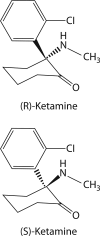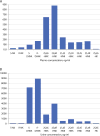Advances in translational neuropathic research: example of enantioselective pharmacokinetic-pharmacodynamic modeling of ketamine-induced pain relief in complex regional pain syndrome
- PMID: 21360034
- PMCID: PMC6022285
- DOI: 10.1007/s11916-011-0185-3
Advances in translational neuropathic research: example of enantioselective pharmacokinetic-pharmacodynamic modeling of ketamine-induced pain relief in complex regional pain syndrome
Abstract
Historically, complex regional pain syndrome (CRPS) was poorly defined, which meant that scientists and clinicians faced much uncertainty in the study, diagnosis, and treatment of the syndrome. The problem could be attributed to a nonspecific diagnostic criteria, unknown pathophysiologic causes, and limited treatment options. The two forms of CRPS still are painful, debilitating disorders whose sufferers carry heavy emotional burdens. Current research has shown that CRPS I and CRPS II are distinctive processes, and the presence or absence of a partial nerve lesion distinguishes them apart. Ketamine has been the focus of various studies involving the treatment of CRPS; however, currently, there is incomplete data from evidence-based studies. The question as to why ketamine is effective in controlling the symptoms of a subset of patients with CRPS and not others remains to be answered. A possible explanation to this phenomenon is pharmacogenetic differences that may exist in different patient populations. This review summarizes important translational work recently published on the treatment of CRPS using ketamine.
© Springer Science+Business Media, LLC 2011
Conflict of interest statement
Figures



References
-
- Stanton-Hicks M. Complex regional pain syndrome. Anesthesiol Clin N Am. 2003;21:733–4. - PubMed
-
- Kingery WS. A critical review of controlled clinical trials for peripheral neuropathic pain and complex regional pain syndromes. Pain. 1997;73:123–39. - PubMed
-
- Kim KJ, Yoon YW, Chung JM. Comparison of three rodent neuropathic pain models. Exp Brain Res. 1997;113:200–6. - PubMed
-
- Bennett GJ, Xie YK. A peripheral mononeuropathy in rat that produces disorders of pain sensation like those seen in man. Pain. 1988;33(1):87–107. - PubMed
-
- Seltzer Z, Dubner R, Shir Y. A novel behavioral-model of neuropathic pain disorders produced in rats by partial sciatic-nerve injury. Pain. 1990;43:205–18. - PubMed
Publication types
MeSH terms
Substances
Grants and funding
LinkOut - more resources
Full Text Sources
Medical

